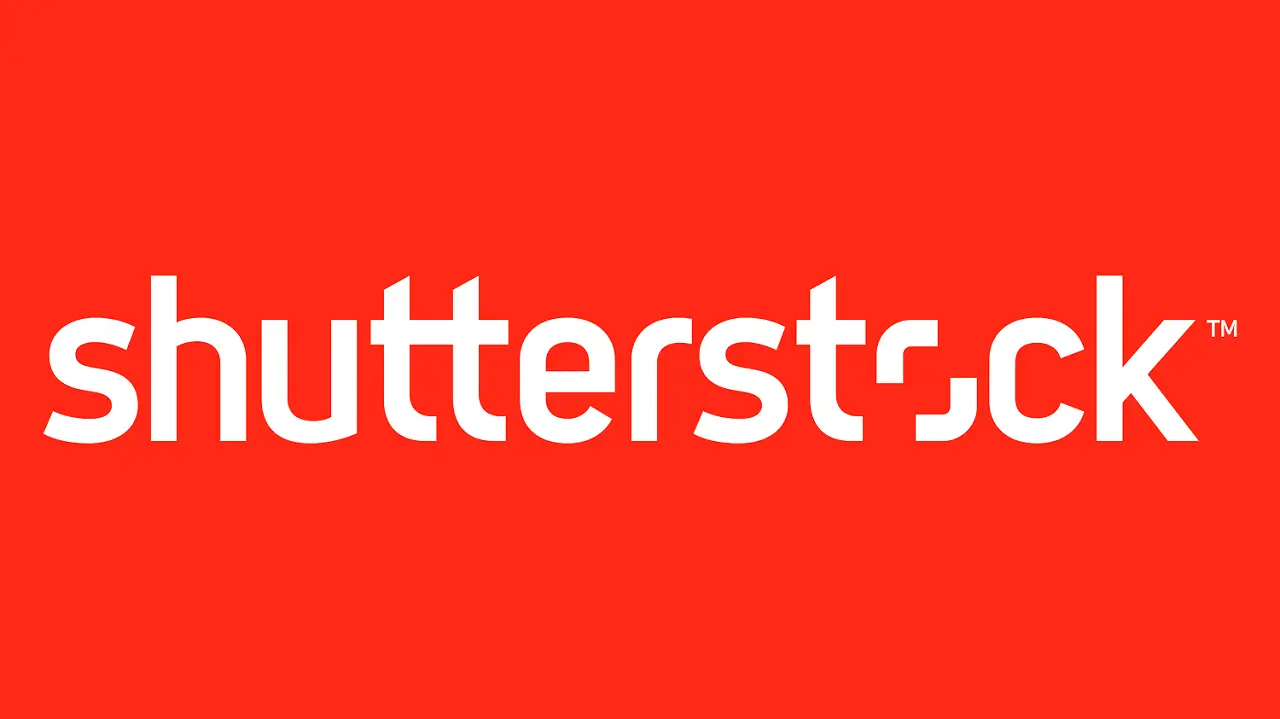Introduction:
Selecting the right platform for selling photos is crucial for photographers who want to monetize their work effectively. In today's digital age, there are numerous platforms available, each offering unique features and benefits. Two prominent platforms in the photography industry are Alamy and Shutterstock. Understanding the differences between these platforms and aligning them with individual needs and goals is essential for making an informed decision.
Alamy and Shutterstock are both well-established platforms that cater to photographers looking to sell their photos online. Alamy offers a large customer base and global reach, providing photographers with extensive exposure and sales opportunities. On the other hand, Shutterstock boasts a wide distribution network and a vast collection of images, videos, and music, attracting a diverse range of customers.
Also Read This: Adobe Stock Alternatives: Exploring Other Stock Photography Platforms
Alamy:
[caption id="attachment_201079" align="alignnone" width="1200"] Alamy[/caption]
Alamy[/caption]
Alamy is a well-established platform for selling photos that offers a range of features and benefits to photographers. With a large customer base and global reach, Alamy provides photographers with significant exposure and potential sales opportunities. The platform is known for accepting a diverse range of subjects and styles, allowing photographers to showcase their unique creativity.
One of the key advantages of Alamy is its flexibility in pricing options and commission rates. Photographers have the freedom to set their own prices, giving them control over the value of their work. Additionally, Alamy allows photographers to retain copyright, enabling them to explore different licensing options and maintain ownership over their image. There are considerations and limitations when using Alamy. The marketplace can be highly competitive, given the vast number of photographers and images available. This saturation may make it challenging for photographers to stand out and generate consistent sales. Furthermore, Alamy has strict quality and submission guidelines, ensuring that only high-quality images are accepted. While this maintains the overall standard of the platform, it can pose a hurdle for photographers who are starting out or have a more niche photography style.
Another aspect to note is that Alamy has limited community and networking features compared to other platforms. While photographers can showcase their work and interact with customers, the platform does not provide extensive opportunities for photographers to connect with each other. This may impact the sense of community engagement and support among photographers.
Despite these limitations, there are success stories and testimonials from photographers who have found success on Alamy. By understanding the competitive nature of the marketplace, adhering to quality standards, and strategically pricing their work, photographers can leverage Alamy's global reach to gain exposure and generate sales.Alamy offers a platform with a broad customer base and flexible pricing options, allowing photographers to retain copyright and explore licensing opportunities. However, photographers should be prepared for high competition, strict quality guidelines, and limited community engagement. By carefully considering these factors, photographers can determine if Alamy is the right platform for theizr photography business.
Also Read This: Imgflip: Crafting Humor with Meme Magic
Shutterstock:
[caption id="attachment_201117" align="alignnone" width="1280"] Shutterstock[/caption]
Shutterstock[/caption]
Shutterstock is a prominent platform for selling photos that offers a wide range of features and benefits to photographers. With a global distribution network and a vast collection of images, videos, and music, Shutterstock provides photographers with extensive exposure and potential earnings opportunities.
One of the key advantages of Shutterstock is its wide customer reach. The platform attracts a diverse range of customers, including designers, marketers, and content creators from various industries. This broad customer base increases the potential for photographers to reach a larger audience and generate sales. Shutterstock also boasts an extensive collection of images, videos, and music, offering photographers the opportunity to showcase their work alongside a diverse range of content. This variety attracts customers with different needs and preferences, increasing the chances of photo sales.
Contributing to Shutterstock is relatively straightforward, thanks to its easy submission process and user-friendly interface. Photographers can upload their photos and manage their portfolio efficiently, allowing them to focus on creating and promoting their work. There are considerations and limitations when using Shutterstock. The platform maintains more stringent quality control measures to ensure a high standard of content. This may require photographers to meet specific technical and aesthetic criteria, which can be both advantageous and challenging.
Additionally, Shutterstock's pricing structure and commission rates should be taken into account. While the platform offers potential for higher earnings due to its large customer base, the commission rates for contributors may be lower compared to some competitors. It's important for photographers to evaluate the balance between earning potential and the commission structure that aligns with their financial goals.
Another aspect to consider is the restrictions on exclusive licensing and copyright control. Shutterstock operates under a royalty-free licensing model, which limits photographers' ability to sell exclusive rights to their images. Photographers should assess how this aligns with their licensing preferences and business strategies.
Despite these considerations, Shutterstock has garnered positive feedback from photographers who have found success on the platform. Many photographers appreciate the exposure, potential earnings, and user-friendly experience offered by Shutterstock. Shutterstock offers a platform with a wide customer reach, extensive content collection, and user-friendly interface. However, photographers should consider the quality control measures, commission rates, and licensing restrictions when deciding if Shutterstock aligns with their goals.
This video explain of Shutterstock vs Alamy:
Also Read This: Unsubscribing from Depositphotos: Easy Steps
Comparison and decision-making factors:
When comparing Alamy and Shutterstock as platforms for selling photos, several key factors come into play. Evaluating these factors will help photographers make an informed decision that aligns with their specific needs and goals. The following factors should be considered:
1. Image collection and variety: Assess the size, diversity, and quality of the image collections offered by Alamy and Shutterstock. Consider whether the platforms offer the specific types of visuals and content that are relevant to your target audience and projects.
2. Licensing options and pricing structure: Evaluate the licensing options provided by each platform and determine if they meet your usage requirements and budget. Compare the pricing structures, including any subscription plans or credits offered, to determine which offers the most cost-effective solution for your needs.
3. Community and networking opportunities: Consider the community engagement and networking features provided by each platform. Evaluate the opportunities for photographers to connect with each other, share knowledge, and gain exposure. This factor can contribute to a sense of community and support among photographers.
4. Quality control and submission process: Assess the quality control measures and submission guidelines of both platforms. Determine if they align with your photography style and if you are comfortable meeting the required standards. Stricter quality control may ensure a higher overall standard but could pose challenges for photographers who are starting out or have niche photography styles.
5. Revenue potential and commission rates: Evaluate the revenue potential and commission rates offered by each platform. Consider the potential earnings based on the customer reach and sales opportunities. Assess the commission rates and determine if they align with your financial goals and expectations.
By carefully evaluating these factors, photographers can make a well-informed decision when choosing between Alamy and Shutterstock. It is important to align the chosen platform with your specific needs and goals, such as image variety, licensing options, community engagement, quality control, and potential earnings. Taking these factors into account will contribute to selecting the platform that best supports your photography business and maximizes your opportunities for success.
[caption id="attachment_201124" align="alignnone" width="1280"] Comparison and decision-making factors:[/caption]
Comparison and decision-making factors:[/caption]
Also Read This: 10 Creative Ideas for Professional Photographers to Use Flickr
FAQ:
What is the difference between Alamy and Shutterstock?
- Alamy is a stock photo agency that sells high-quality images to businesses and media outlets.
- Shutterstock is a stock photo library that sells high-quality images to a wide range of users, including businesses, media outlets, and individuals.
What are the different licensing options available on Alamy and Shutterstock?
Alamy offers a wider range of licensing options than Shutterstock.
Alamy's licensing options include:
-
-
- Standard: This is the most basic licensing option and allows buyers to use the image for personal or commercial purposes.
- Enhanced: This licensing option gives buyers more usage rights, such as the ability to use the image in print and online advertising.
- Extended: This licensing option gives buyers the most usage rights, such as the ability to use the image in marketing materials and product packaging.
-
Shutterstock's licensing options include:
-
-
-
- Standard: This is the most basic licensing option and allows buyers to use the image for personal or commercial purposes.
- Enhanced: This licensing option gives buyers more usage rights, such as the ability to use the image in print and online advertising.
- Commercial: This licensing option gives buyers the most usage rights, such as the ability to use the image in marketing materials and product packaging.
- Editorial: This licensing option allows buyers to use the image for editorial purposes only.
-
-
What are the commission rates for Alamy and Shutterstock?
- Alamy's commission rate is 50% for the first year and then drops to 35% after that.
- Shutterstock's commission rate is 30% for all sales.
What are the different ways to earn money from selling photos on Alamy and Shutterstock?
Photographers can earn money from selling photos on Alamy and Shutterstock in two ways:
-
-
- Royalties: Photographers earn royalties on every sale of their images. The amount of royalties that photographers earn depends on the licensing option that the buyer chooses.
- Subscriptions: Photographers can also earn money from Alamy's subscription service. Alamy's subscription service gives users access to a library of millions of images, and photographers earn a share of the subscription fee for every image that is downloaded.
-
What are the image requirements for Alamy and Shutterstock?
- Alamy's image requirements are more stringent than Shutterstock's.
- Alamy requires images to be at least 2 megapixels and to have a minimum resolution of 1200 x 800 pixels.
- Shutterstock requires images to be at least 1 megapixel and to have a minimum resolution of 800 x 600 pixels.
What are the benefits of selling photos on Alamy?
- Alamy has a large market reach and sells more images than Shutterstock.
- Alamy has a more established reputation than Shutterstock.
- Alamy offers a wider range of licensing options than Shutterstock.
What are the benefits of selling photos on Shutterstock?
- Shutterstock has a larger user base than Alamy.
- Shutterstock offers a variety of subscription plans, which can be more affordable for individual users and creative professionals.
- Shutterstock has a more user-friendly interface than Alamy.
What are the future trends for selling photos online?
-
- The future of selling photos online is likely to be driven by the growth of mobile photography and the increasing demand for high-quality images.
- As more and more people use their smartphones to take photos, there will be a growing demand for stock photos that are high-quality and mobile-friendly.
Additionally, the demand for creative and unique images is also increasing. As a result, photographers who can create high-quality and creative images are likely to be more successful in selling their photos online.
What are the different ways to promote my photos on Alamy and Shutterstock?
There are a few different ways to promote your photos on Alamy and Shutterstock:
-
-
-
- Use relevant keywords: When you upload your photos, make sure to use relevant keywords. This will help buyers find your photos when they are searching for images.
- Categorize your photos: Alamy and Shutterstock allow you to categorize your photos. This can help buyers find your photos when they are browsing by category.
- Submit your photos to contests: Alamy and Shutterstock often run contests for photographers. If you win a contest, your photos will be featured on the website, which can help you get more exposure.
- Promote your photos on social media: Share your photos on social media platforms like Facebook, Twitter, and Instagram. This can help you reach a wider audience and attract more buyers.
-
-
What are the future trends for selling photos online?
- The future of selling photos online is likely to be driven by the growth of mobile photography and the increasing demand for high-quality images.
- As more and more people use their smartphones to take photos, there will be a growing demand for stock photos that are high-quality and mobile-friendly.
- Additionally, the demand for creative and unique images is also increasing. As a result, photographers who can create high-quality and creative images are likely to be more successful in selling their photos online.
Conclusion:
Choosing the right platform for selling photos, whether it's Alamy or Shutterstock, requires careful consideration of various factors. Both platforms offer unique features, benefits, and considerations that photographers should evaluate to make an informed decision. Alamy provides a large customer base, global reach, and flexible pricing options. Photographers can retain copyright and explore diverse licensing options.
Shutterstock boasts a wide customer reach, an extensive content collection, and user-friendly features. The platform offers potential for higher earnings due to its large customer base. When making a decision, photographers should consider factors such as image variety, licensing options, community engagement, quality control, and revenue potential.









































